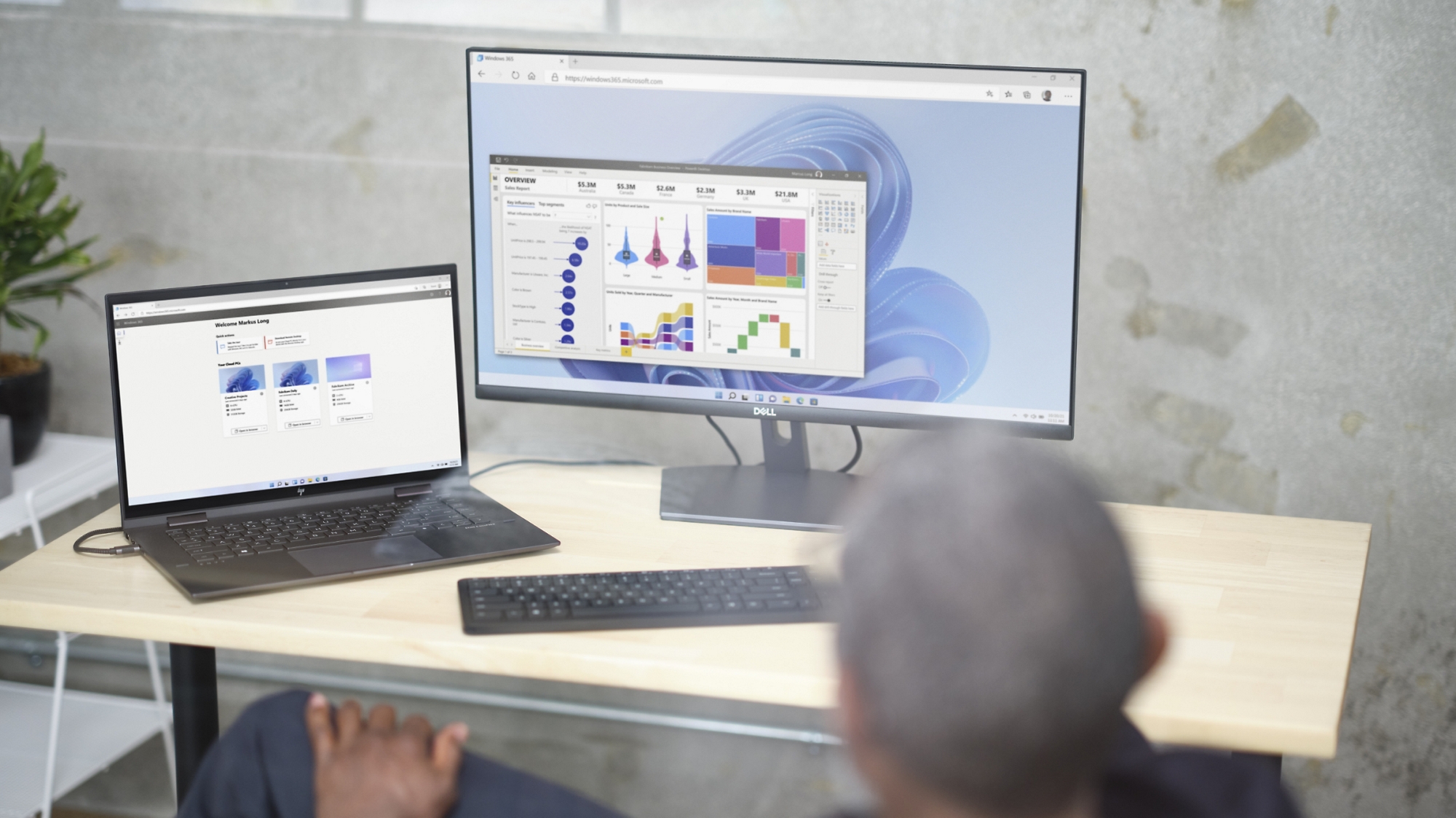
The importance of remote desktops in flexible work
Hybrid work has become a mainstay of modern work. Learn about remote desktop, how it works, and how it can empower your business.
A remote desktop for a hybrid world
Discover the benefits of remote desktop access with a virtual PC, no matter where you live, work, or run your business.

Accommodate hybrid employees
Make it possible for employees to quickly gain access to the cloud, wherever they work.

Embrace modern technology
A remote desktop setup is a value-enhancing technology solution that can help move your organization forward.

More safely access files
Work online, share valuable information with colleagues, and safeguard business data while in the cloud.

Enable remote management
With remote access, IT departments can oversee cloud PCs alongside their physical devices in Microsoft Intune, creating a simplified management experience for the workplace.

Improve efficiency
Set your hybrid team up on the same operating system for a personalized and familiar desktop experience on any device.
Solutions for the new world of work
Combine the security of the Microsoft Cloud with the versatility of the PC. See how Windows 365 offers a personalized Windows experience that boosts productivity.
What is a remote desktop?
A remote desktop setup allows a person to tap into a computer network without being physically connected or even in the same location as the host device. Through this function, people can access files, documents, and software from a computer desktop, remotely. While the term “desktop” is used, a remote desktop can refer to a PC, smart device, server, or application that enables remote connection and access.
With the rise of flexible work, a remote desktop empowers an increasingly global workforce to work from anywhere. A remote desktop can help you increase efficiency, promote accessibility, and grow your business.
How to access and control a remote PC
A remote desktop uses a host computer (the device you want to access remotely) and a client computer (the device you use to establish the remote connection). The host computer is the device that houses the operating system—including any software, files, or additional to-be-shared technology—with the client device.
You can access, connect, and control your PC using remote desktop with the Windows App (now available in preview via the Microsoft Store for Windows devices, the web, or TestFlight for Apple devices). Connect and access your apps, files, and network resources remotely, anywhere you work.
Why people use remote desktops
People use remote desktops for a few reasons. Specifically, to help:
- Empower people to work from anywhere on any device.
- Enhance efficiency across an organization.
- Make working online more secure.
Many workers—more than 80%—overwhelmingly prefer a remote-first or fully remote work structure, according to Buffer’s “2022 State of Remote Work” survey. And in a hybrid or remote setting, you want to empower—not hinder—your team’s ability to work efficiently and more securely. As such, a remote desktop setup can help serve your organization across job roles and departments.
Challenges of a remote desktop
When it comes to technology and hybrid work, your organization may encounter any of the following:
- Security risks
- Technical issues
- Poor internet connection
Some of these problems (like substandard internet service) can affect a remote desktop setup, too. However, a remote desktop can also help address and solve some of these issues.
Is remote desktop right for your organization?
Remote desktops have several features and benefits for your organization. For instance, this type of setup can:
- Enable people to work from just about anywhere on any device. With an increasingly global workforce that values remote work, this is paramount.
- Help safeguard your data. Remote desktop with a solution like Windows 365 helps ensure more secured access and allows you to safely facilitate more diverse work options.
- Offer a personalized experience. With remote access, your team can stream tailored-to-them apps, content, and settings.
A remote desktop setup can help empower and strengthen your operation from the top down, no matter where or how your team works.
Explore remote desktop services

Microsoft 365
Check out apps and tools that help you do your best work on desktop and the web.

OneDrive cloud storage
Save your files and then access them—wherever you are—across all devices.


Windows 365 Cloud PC
Securely stream apps, content, and settings from the Microsoft Cloud to any device.
Frequently asked questions
-
A remote desktop is a way for employees to access essential company documents, data, applications, and software from one device, regardless of where they’re located. Certain job roles also require this type of access to help users, such as IT and customer support professionals.
-
Yes, cloud-based remote desktop software is safe. Additionally, you can set up password protection and require network level authentication (NLA) before users can connect to a PC.
-
The purpose of remote desktop software is to create a cloud-based experience that people can access with any device. This access enables remote employees across industries to work without all being tethered to the same physical location.
-
Remote desktop services can help you empower flexibility, increase accessibility, and help promote efficiency in your organization. Remote desktop access is a valuable offering in an increasingly hybrid work world.

Connect with Windows 365:
Follow Us